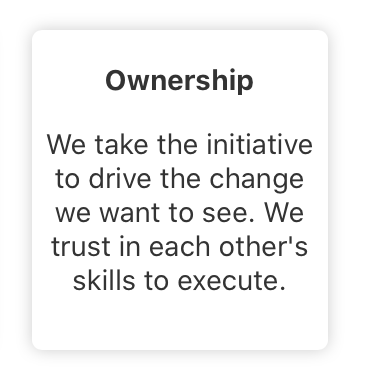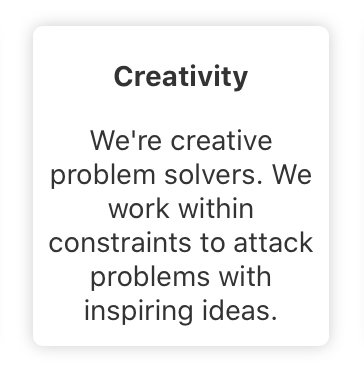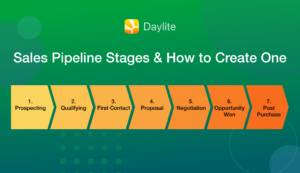If you want your business to have a healthy culture, it all starts with your core values. Not sure how to come up with your core values or how to use them? We got you!
What are core values and why does your company need them?
Core values are the guiding principles of who you are as a company. They are your company culture. They define how you act, how you treat each other and your customers, how you make decisions, and the behaviour you model. They’re principles that you truly care about and are non-negotiable when it comes to “the right fit” of people for

Core values are also one of the 10 principles of The Rockefeller Habits, which is a business methodology that we follow. We created our core values when we started working with our business coach from Winning Edge Consultants.
Core values aren’t just words you print out on posters and hang up in your office. They’re the guiding pillars that influence how you make decisions, how you hire, how you praise and reward behaviour, and the company culture you cultivate. That being said, it’s also good to put them up in your office so they’re visible, but they should also be visible within your people.

How do you use core values?
Making decisions:
We use our core values to make decisions, especially when faced with difficult ones. When faced with an important decision, we’ll often ask ourselves – are we being empathic in this decision? Are we going about this process with the spirit of Kaizen? Are we solving this problem in a creative way that fits within our restrictions?
Core values paired with your mission statement are similar to a guiding star for your company to keep you aligned and moving in the right direction.
Rewarding and coaching behaviour:
To build your company culture, your core values need to be more than words – they need to be alive in your company and used for rewarding and coaching employee behaviour. For each core value, we have a defined statement of what that core value means to us.
For example, Creativity can mean a lot of things to different companies. For us, it’s not just about being creative with creative writing or design skills, it’s about solving problems with creative solutions that fit within the scope of our restrictions.

Using these definitions, we write out what A Performance, B Performance, and C Performance looks like for each core value. We’ve hired a Leadership Consultant to help us put together our scorecards and core value definitions, but you can create these on your own. The Small Business Guide To Building Your Company Culture is included at the bottom of this post can help you.
Using these definitions within our Performance Scorecards, it becomes much clearer when people are shining examples and deserve praise for living our core values, and when people need a bit of coaching. For this to work, you need your C and B definitions to clearly articulate examples of where the individual is not meeting expectations.
Hiring:
As your company grows, if you want to maintain your company culture, your core values need to be part of the hiring process. To make sure we’re hiring the right fit people for our company, we use our core values when interviewing. To do this, we refer to the definitions of our core values using in our Scorecards.
During the various interview stages, we’ll ask candidates questions that help us uncover whether or not they have a proven track record of living our core values.
Let’s take Creativity as an example again.

We’ll ask a candidate about a particularly sticky challenge or problem they encountered at a previous job. We’ll ask for details about the challenge, why it was tricky, and a lot of “tell me more” questions to uncover how they dealt with that challenge. By asking these questions for multiple challenges at various jobs, we’ll be able to spot patterns in how they handle problems. This type of questioning forces us to read between the lines.
- How do they react to challenge?
- Do they easily get frustrated or are they good at problem solving?
- Do they immediately ask for help or are they resourceful in getting some of the way on their own before asking for guidance?
- Do they give up and leave it for someone else to figure out, or do they take ownership of a problem and drive the change they want to see?
This type of questioning takes longer than a question like, “how would you handle situation ABC?” but it provides way more insights into the behaviour, strengths, and weaknesses of an individual. People are terrible predictors of what they’ll do. Anyone can give you the right answer on how they would handle a situation, but learning how someone did handle a sticky situation is far more telling and is a better way to predict how they’ll handle situations in the future. Understanding candidates patterns and behaviour will help you identify if they’re a good fit with your company culture or not.
For more on how we hire, check out our blog Why We Weren’t Great At Hiring And What We Did To Fix It.
How do you keep your company culture alive?
To keep your company culture alive, you need to be actively referring to your core values to keep them visible. Since I’ve already explained how we use Performance Scorecards to keep our core values active, I’ll share a few ways that we keep them visible.
When we worked in the office, keeping our core values visible was easier than it is now that we’re remote. We printed our core values on big posters and hung them on the walls. We also had a large wall with every employees photo and we used post-in notes to write “props” for people when we noticed someone living one of our core values. This helped to keep our core values physically visible.
But as we transitioned to working from home majority (if not all) of the time, this became more challenging.
There were two things we did make them visible:
Props Channel
Because we no longer had a physical wall where we could write notes to highlight when people were living our core values, we took this digital and created a Props channel in Slack. This allows us to praise each other for living our core values, and makes it visible to the entire company so we can all give praise.

Company Newsletter
Another way we keep our company culture alive is by including our core values in our company newsletter. We started doing this by listing out each core value at the top of our newsletter and including a “prop” for each team member about how they lived our core value that month.
After a few months of doing this, we noticed more engagement in the Props Slack channel. Eventually it became so many props that we needed to tweak the newsletter. Now we include a photo of each person given a props for each core value that month.
While it may seem like a lot of extra work and time, these activities and iterations over the years have been well worth the investment to build our company culture. The repetition of our core values is what keeps them top of mind so everyone in our company is aware of them and what they mean. Using our core values for performance, praise, coaching, and hiring is what keeps them alive and helps us maintain our company culture even when we’re working miles apart.
For more on building company culture, check out our YouTube video Company Culture: Identifying Your Core Values
About the author:
Kristie Holden is an online marketing consultant. She helps startups get more leads by clarifying their message and creating a marketing strategy to attract and convert their ideal client. Connect with her on Instagram.


